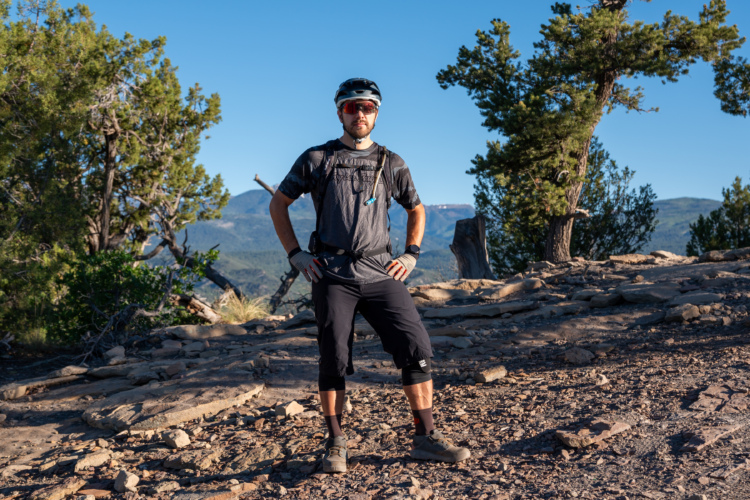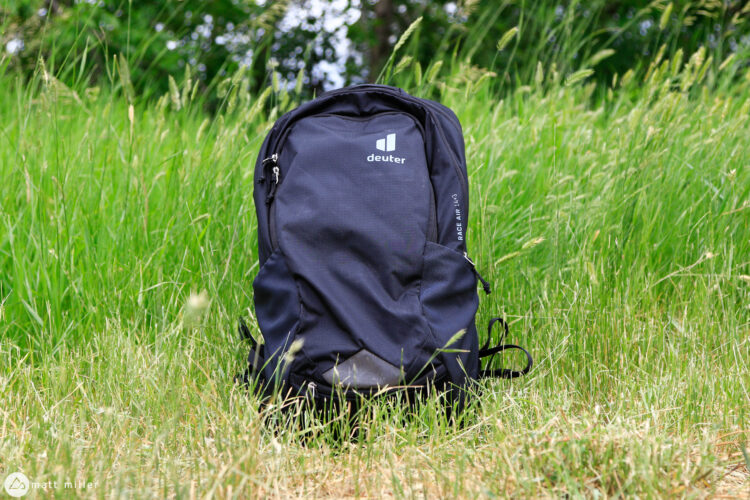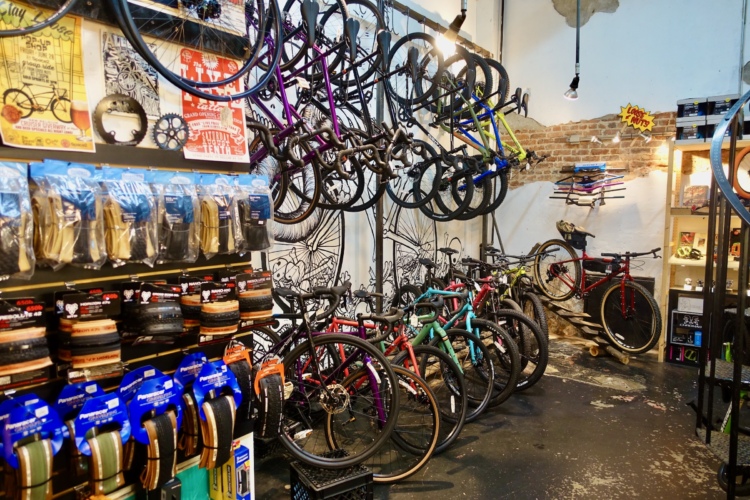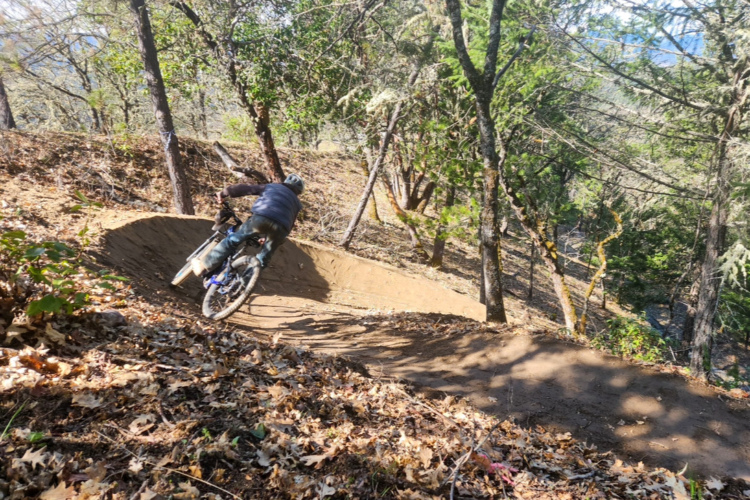
The Dakine Seeker has long been a staple in the brand’s hydration pack lineup. The latest 10-liter Seeker looks to capitalize on this vaunted legacy with a modern design and a suite of just the right number of useful features.
Dakine Seeker 10L hydration backpack key specs
- 10-liter storage capacity
- 3-liter lumbar hydration reservoir
- Weather-tight ripstop nylon construction
- External carry straps and deployable helmet carry strap
- Zippered hip pockets
- Weight: 770g
- Price: $185, on sale for $99 – $111 at time of publication
- Buy from evo and Backcountry
The Seeker is offered in two sizes: 18 liters and 10 liters. I had previously used an 18-liter Seeker, so I decided to give the 10-liter pack a shot to see if it might be just large enough for long rides, without being too bulky.
Regardless of the size of the pack, all Seeker backpacks come with a 3-liter lumbar hydration reservoir that rests at the bottom of the pack along the lumbar spine. The lumbar reservoir distributes the bulk of the pack’s weight, which is the water, to the hips instead of the shoulders. Consequently, the main internal storage rests above the reservoir.

The pack also sports an external zippered pocket with roll-down tool access, which allows for quick access to tools and parts if you need to make a hurried trailside repair. On top of the pack, there’s a zippered fleece-lined pocket that’s perfect for carrying a phone or other sensitive electronics. For easy on-the-go access, both of the hip belts offer zippered pockets — one mesh and one enclosed.
The back of the pack features Dakine’s “AirLite Suspension backpanel,” which is essentially their version of a breathable back that keeps the bulk of the pack from contacting your body. To help the pack retain that shape, a wire frame runs around the entire rectangular profile.
The pack is made of a lightweight, weather-tight 420D nylon ripstop with PU coating, with some portions made from a 210D nylon plain weave with PU coating and DWR. All the closures feature sealed water-resistant zippers. The net-net is that the Seeker should repel rain and snow, even without a pack cover.

Out on the trail with the Dakine Seeker
I’ve spent six months shredding trails with the Dakine Seeker on my back. It’s traveled with me to both New Zealand islands and to all of the Four Corners states. I’ve tested it on wet rainforest trails and in the parched desert of the Southwest on rides ranging from quick one-hour jaunts to eight hours (or more) in the saddle.

Storage capacity
When it comes to evaluating this pack, I do have to admit something: I hand-picked the Seeker from Dakine’s line because I thought it would fit my needs the best. Specifically, I can’t stand backpacks that don’t have pockets on the hip belts. For some reason, Dakine has removed hip belt pockets on all their hydration packs, except for the Seeker line. In my opinion, having easy access to snacks, ChapStick, and other necessities without taking your pack off is absolutely mandatory. Compared with some other packs I’ve used that only have one hip belt pocket, getting two on the Seeker feels like a luxury.
Share your Dakine Seeker 10L Bike Hydration Backpack review
At first, I was worried that the 10-liter size wouldn’t be big enough for epic adventures, but I’ve used the Seeker on all-day epics spanning eight hours or more. I found that I couldn’t fit an entire lunch and multiple extra layers in the main pocket. Instead, I could only carry an emergency rain jacket, hat, warm gloves, and compact lunch in the main pocket. All tools and repair supplies stayed safely stored in the roll-down area.
Instead, if I wanted to carry a pair of pads (to put on at the top of the climb) or a heavier layer that I discarded, I turned to the external straps on the bottom of the pack. I found these to work remarkably well for both knee pads and even a jacket. With a little ingenuity, even a 10-liter pack can haul a heck of a lot of mountain bike gear!

Fit and ride performance
The suspension back panel works supremely well at venting your back and suspending the load in a secure fashion. I found the pack to ride well even in rough terrain. The most adjustment it would ever need was a quick tightening of the straps to adjust the load.
Since this version of the Seeker only offers 10 liters of storage, it has much less heft, sway, or bounce than a larger pack. This is truly the sweet spot for most mountain bikers: not bulky, but just big enough.
Durability
Over many hundreds of miles of riding, I had only one issue with the pack: the main reservoir sprang a slow leak. Unfortunately, I wasn’t able to identify exactly where the leak was coming from, so I swapped the reservoir with an older one from a different pack.
Pros and cons of the Dakine Seeker 10L Bike Hydration Backpack
Pros
- Hip belt pockets
- Suspension back panel is cool and supports the load well
- External straps expand carrying capacity
Cons
- Not large enough for the most epic backcountry trips — buy the 18L instead
- Reservoir sprang a leak
Bottom line
For an everyday mountain bike hydration pack, you can’t go wrong with the Dakine Seeker 10L. The hip belt pockets provide easy access to snacks on the go. The main pack provides plenty of storage space for most rides — just not the truly epic backcountry adventures. If you need to carry several spare layers, a first aid kit, and more, consider getting the Seeker 18L instead.




















0 Comments